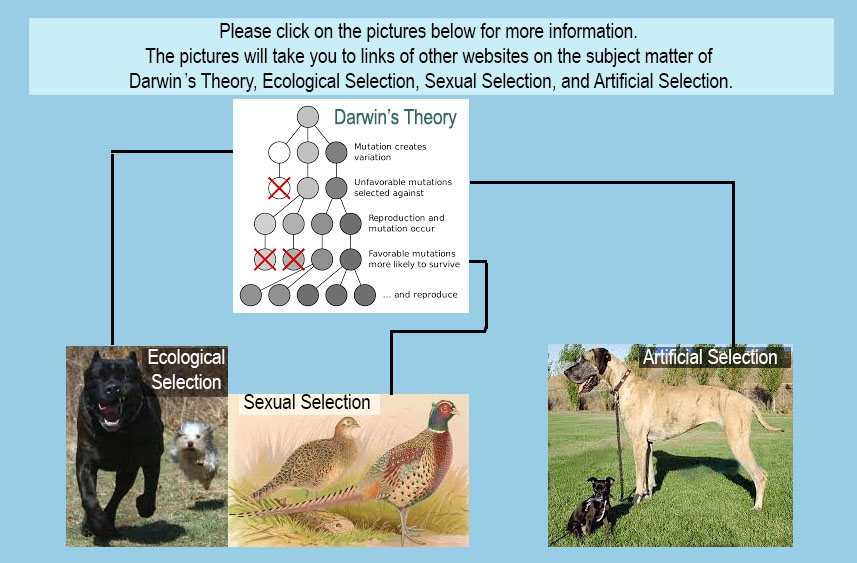

What started this adventure of comparing Artificial and Natural Selection was derived from watching this video on dogs, basically mutts vs pure breeds. The video is called, The Bizarre Truth About Purebreed Dogs (and Why Mutts Are Better) by the comedian Adam Conover in Adam Ruins Everything. Please note this should be for high school students or older. Please watch and enjoy the video which should lead you to the next sections on natural and artificial selection.

Adam Ruins Everything is licensed under Turner Entertainment Networks, Inc. A Time Warner Company. All Rights Reserved.

There are four conditions according to Charles Darwin of natural selection that need to occur:
In Darwin’s influential book written in 1859, On the Origin of Species by Means of Natural Selection, or the Preservation of Favoured Races in the Struggle of Life, he describes natural selection animals and plants with considerably desirable traits are favored for reproduction. This is analogous to what artificial selection or selective breeding is, except the traits are not derived by competition to reproduce or ecological factors.
Ecological selection is referred to as environmental selection minus the sexual selection. In other words, inheritance of specific traits are driven by ecological factors not sexual competition.
Sexual selection according to Darwin is traits selected according to their role in mating and is different from ecological factors. Sexual selection occurs in two ways by contests by the same sex for access to the opposite sex or by choice. For instance, horns, antlers, and other combative devices are from sexual selection because they are directly involved in helping the individual obtain a mate. Choice involves competition for attention from the opposite sex. For example, the tail of a peacock is to attract females; it is a selected trait that is not used to attack or defend.
Artificial selection or selective breeding is a process where humans consciously select organisms for or against particular traits. These desirable traits are not always ones that help the species to be able to utilize their resources to survive. For example, choosing cattle with beneficial features such as larger in size or producing more milk. Or, for instance, a dog for his size or coloring, i.e. the Doberman.
The problems that can arise with Artificial Selection can be exemplified with the Doberman. The Doberman is breed for appearance. This genetic makeup also has a defected gene that causes narcolepsy, a condition that causes dogs to uncontrollably fall asleep, in its chromosomic structure.
Moreover, genetic diversity plays an important role in the adaptability to survive. Variation in the gene pool allows diversity and the ability to adapt. Evolution is based on genetic diversity. With little genetic diversity with a species, reproduction, vulnerability to diseases and other issues result when inbreeding occurs.